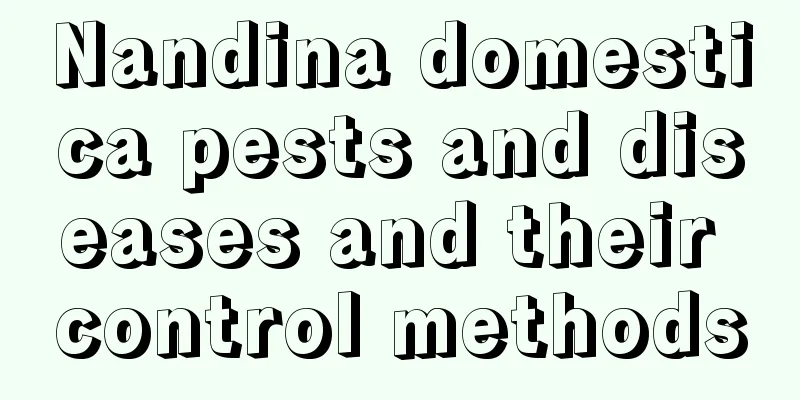Nandina domestica pests and diseases and their control methods

Nandina domestica disease 1: red spot diseasesymptomThe disease mostly occurs at the tip or edge of the leaves. At first, the lesions are brown spots, which then expand to semicircular or wedge-shaped lesions with a diameter of 25 mm to 50 mm. The lesions transition from light brown to dark brown from the center to the outside, with a wider red halo on the outer edge that appears slightly radial. In the later stage of the disease, clusters of sooty lumps will grow on the lesions, and the color is gray-green to dark green. Prevention and treatment methods(1) Remove diseased leaves promptly and bury or burn them. When there are many diseased leaves, you can keep some of the less infected leaves for viewing, and then remove the diseased leaves after the new leaves unfold in the spring of the following year, so as to control the source of the pathogen. (2) Before the onset of spring red spot disease, spray methyl thiophanate wettable powder or mancozeb, or new fungicides, once every 10 to 15 days, for 2 to 3 times in a row. Nandina domestica disease 2: AnthracnoseSymptoms: The disease occurs on the leaves, initially as small brown spots, which gradually expand into spots of various shapes with dark brown edges. When small lesions gather into large lesions, they may even occupy more than half of the area of the leaflet. In the later stage, many small raised black spots will appear on the lesions. When the weather is humid, pink sticky lumps will appear on the small black spots. Prevention and treatment methods(1) Remove diseased leaves promptly and burn or bury them in batches. (2) Spray thiophanate wettable powder during the disease season, once every 10 to 15 days, for 3 times in a row. Nandina domestica pestsLooperLiving habits: Overwinter in the form of pupae in the soil around tree trunks or under rocks, begin to emerge in April to early May of the following spring, and the peak period of emergence is mid-to-late July. Prevention and treatment methods(1) Manual digging of pupae. Carry out this operation in areas with severe insect infestation, in early spring or late fall. (2) Use black light to lure and kill adults during their emergence stage. (3) Spray cypermethrin or trichlorfon before the larvae reach the fourth instar. |
<<: Diseases and Pests of Silk Flower and Their Control
>>: Diseases and pests of cinnabar root (weed seeds) and their control
Recommend
How to make carnations bloom quickly
1. Light and temperature If you want the plant to...
How often do grape vines generally get eliminated?
As the years go by, the grapevines will gradually...
Disease prevention and control methods of Paphiopedilum
Damping-off Symptoms It often occurs when the see...
Can I water the newly bought Kalanchoe? (How to water the newly bought Kalanchoe?)
"Water after it's dry" Kalanchoe is...
How to raise Lithops seedlings
1. Pay attention to soil selection for sowing Aft...
How to grow orchids and the price of orchids
1. How to grow orchids Soil selection: When plant...
How to save a dead kumquat tree
1. Spraying Reason: When the kumquat tree dries u...
What are the benefits of watering flowers with fish farming water? Using fish farming water as fertilizer
The benefits of watering flowers when raising fis...
How to repot Maruyeji Autumn Lily
1. Take out Be careful and gentle when removing t...
How to grow dancing grass bonsai
soil Dancing grass likes loose, fertile, well-dra...
Desert Rose Seeds
Desert Rose Seeds The flowers of the desert rose ...
Maintenance methods and precautions for Tamarix bonsai
The germination ability of the plant is particula...
How long does it take for Eustoma cuttings to take root?
Rooting time of Eustoma cuttings There is general...
How to plant winter melon in pots
sowing Generally, potted plants are grown by tran...
How often should I water the bamboo palm?
How often should I water the bamboo palm? Bamboo ...









